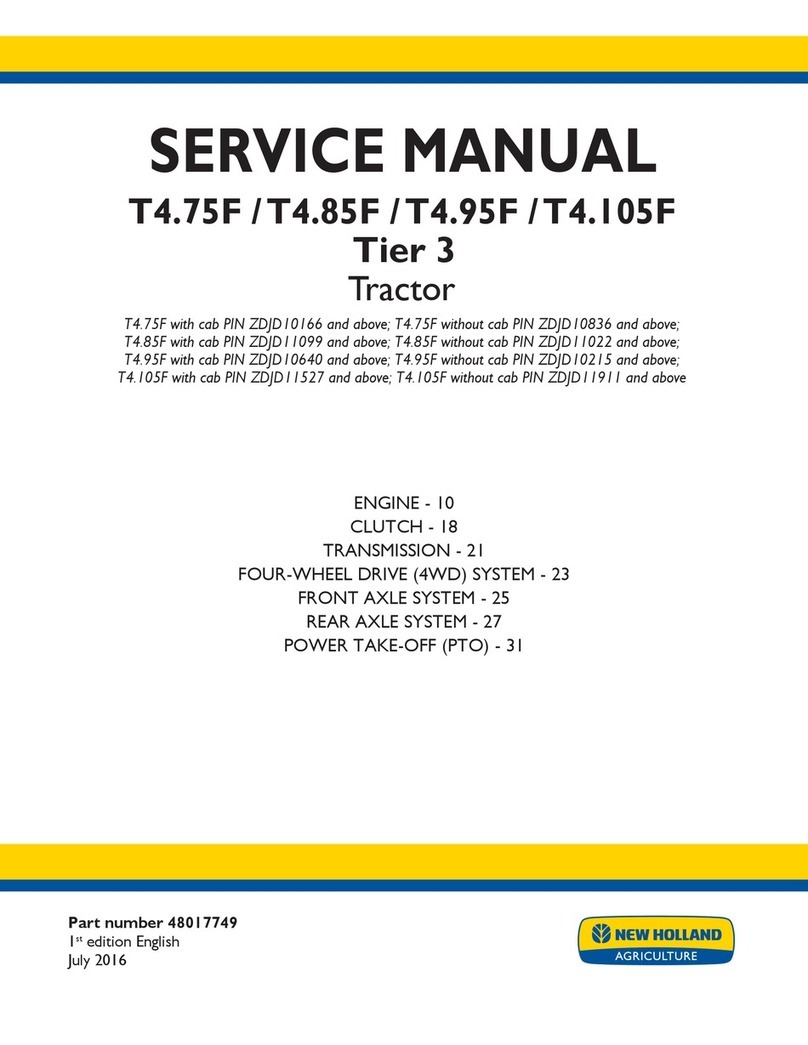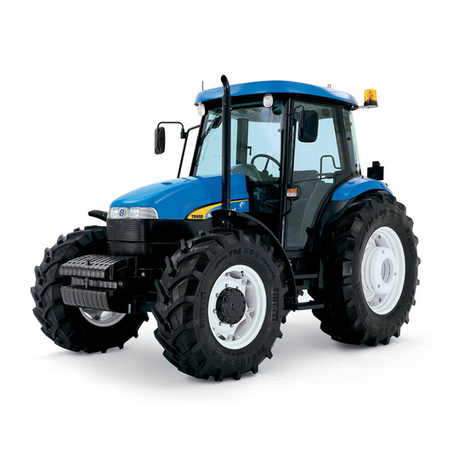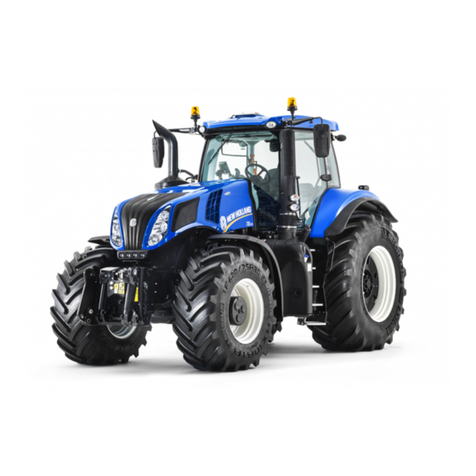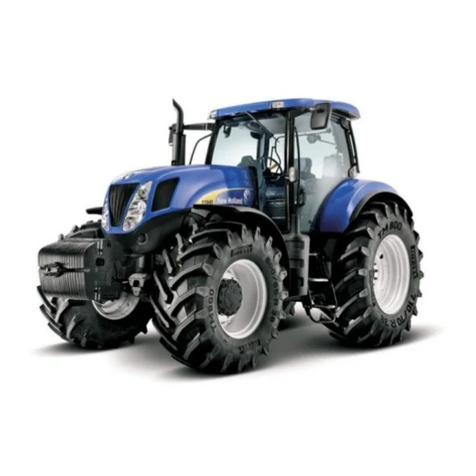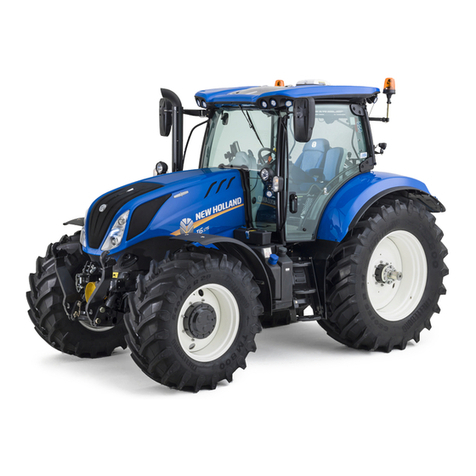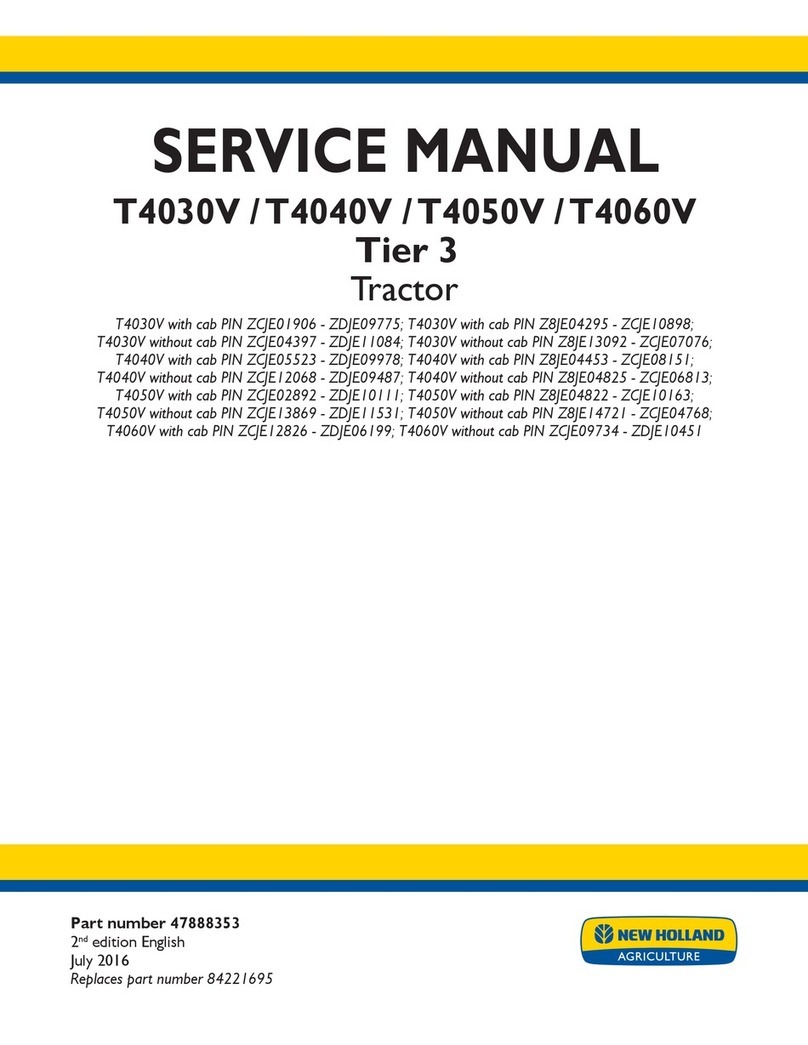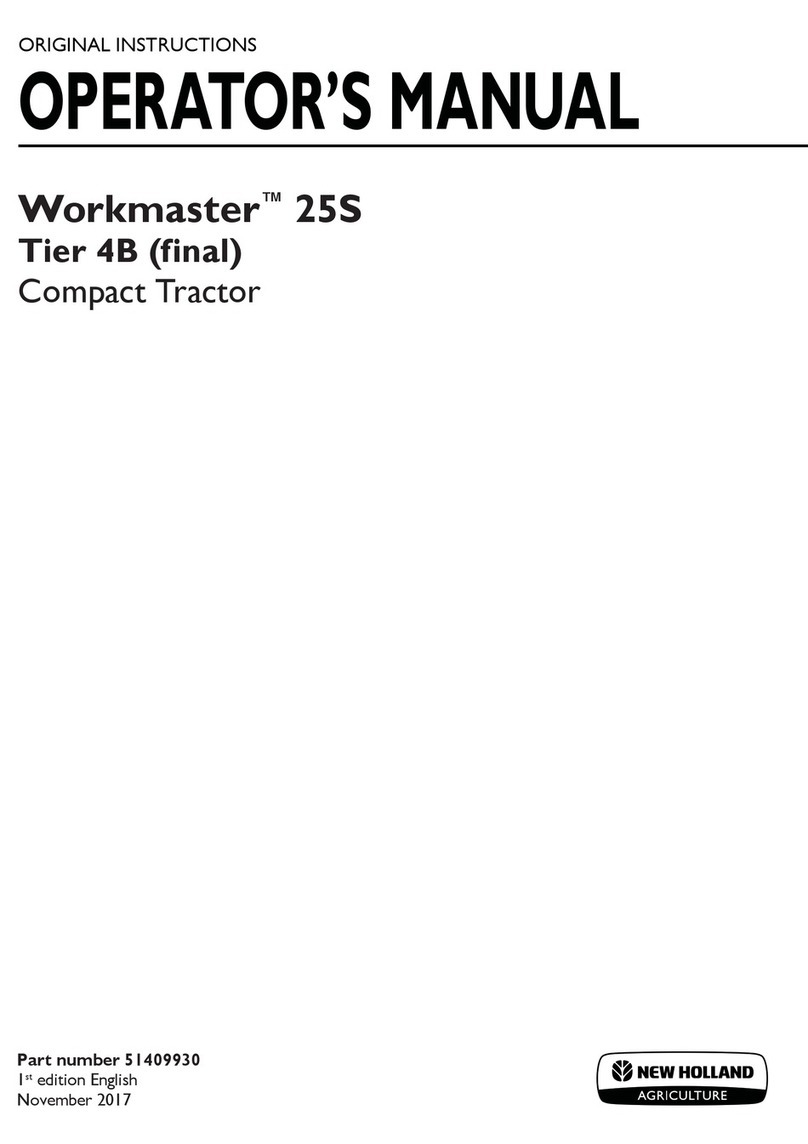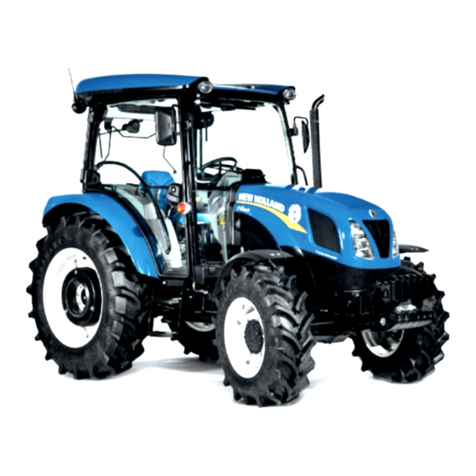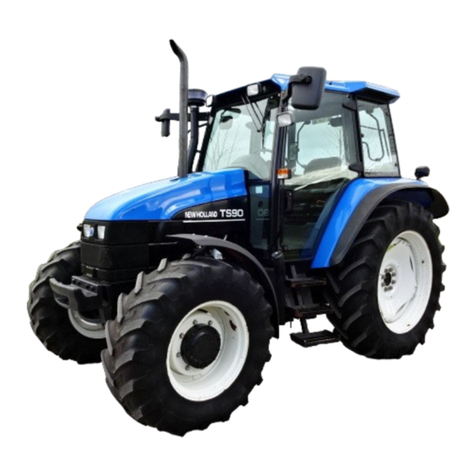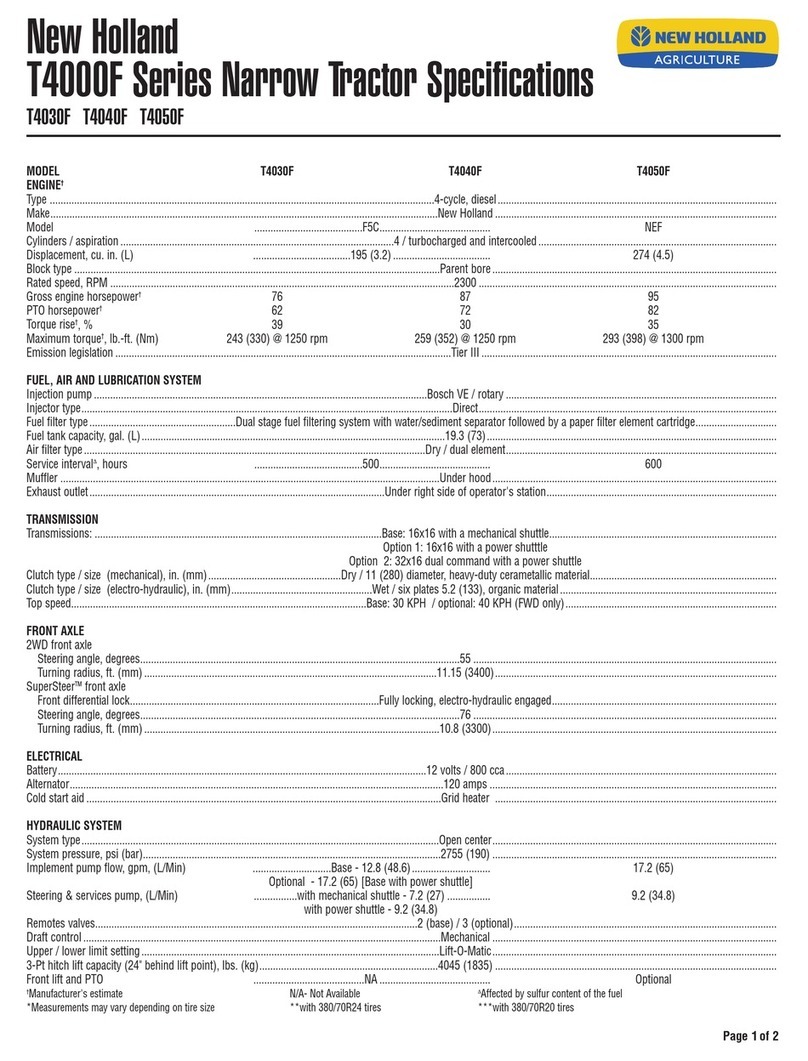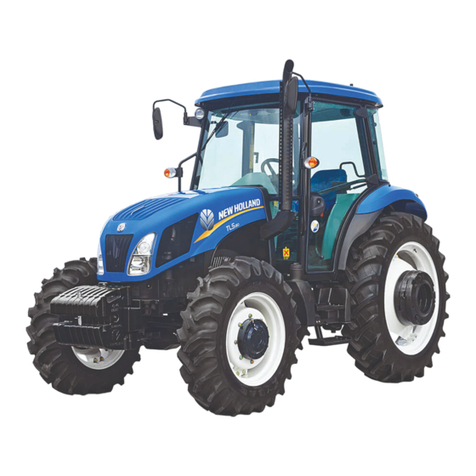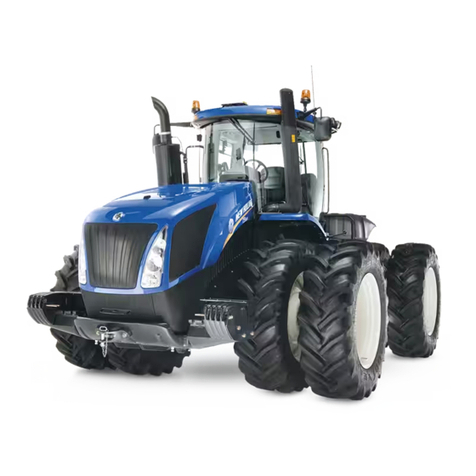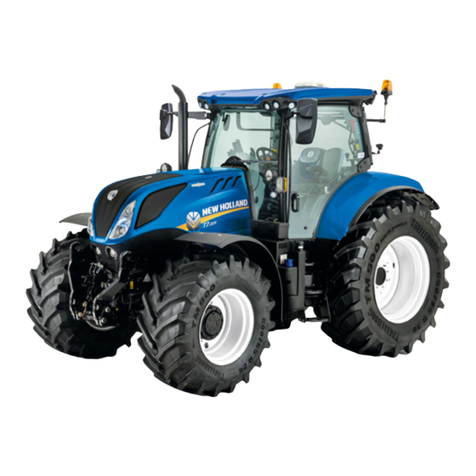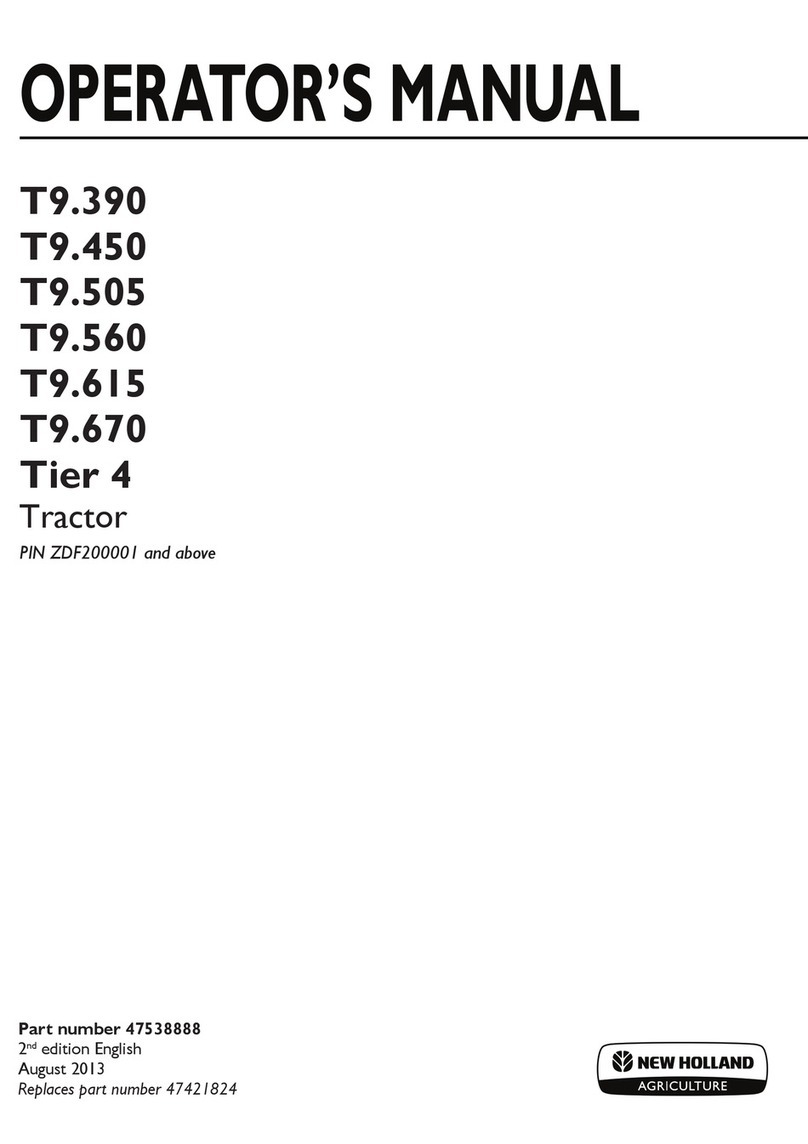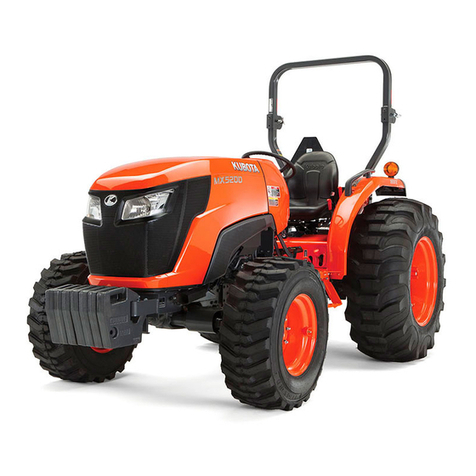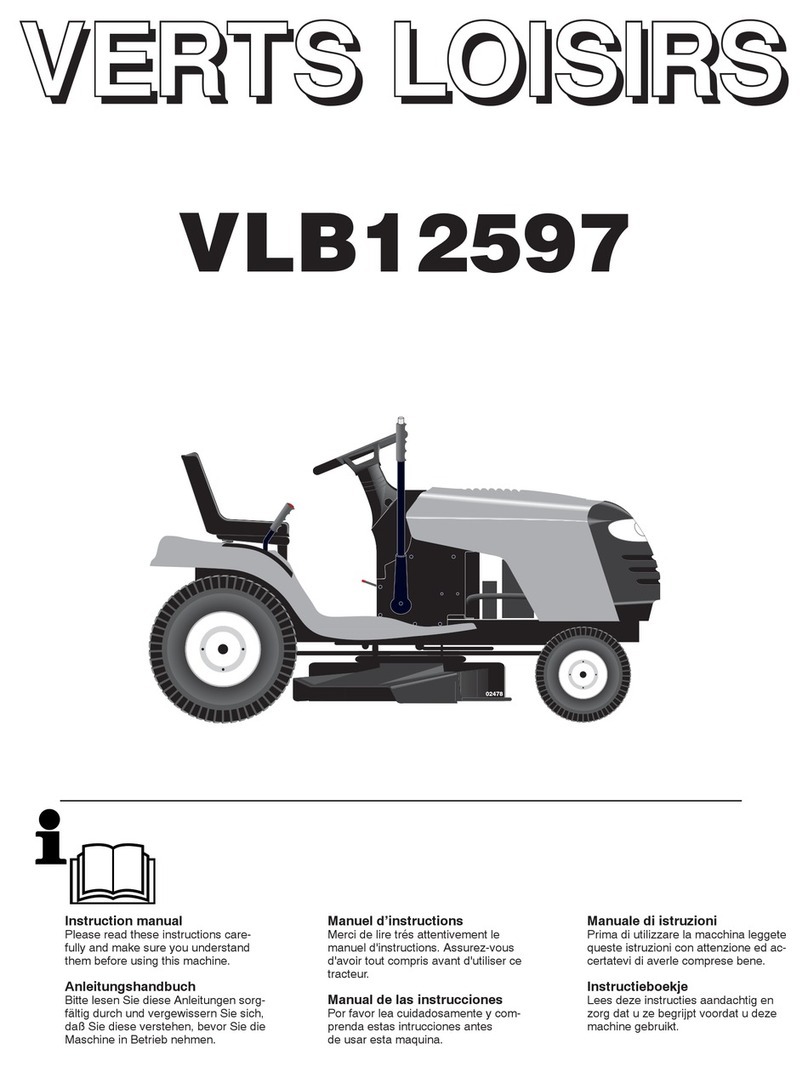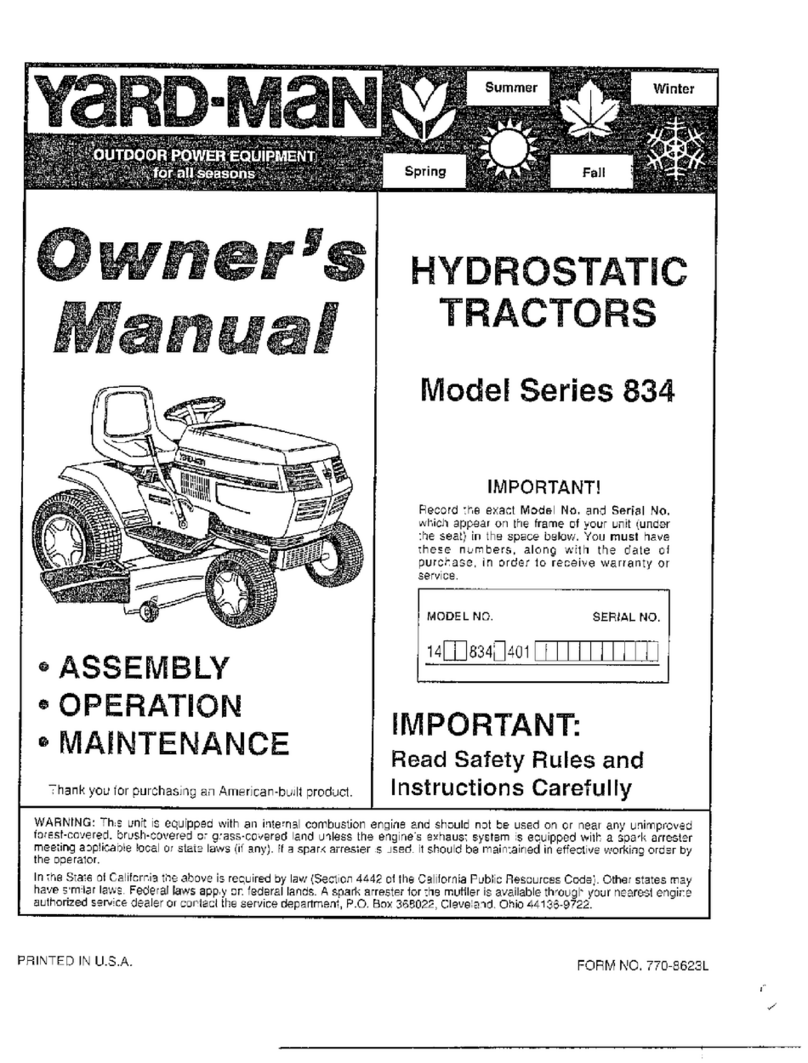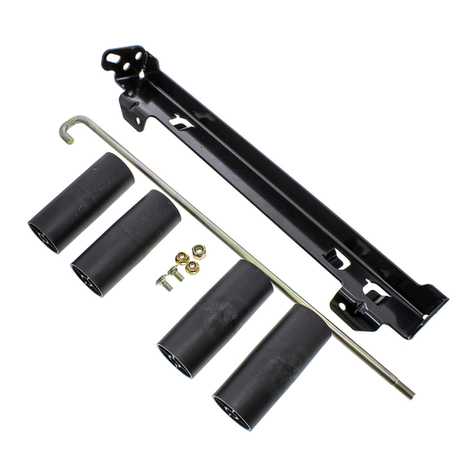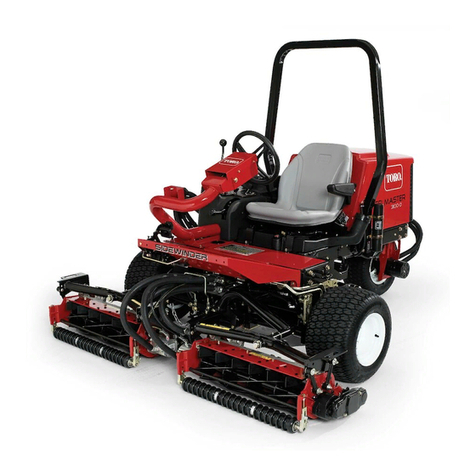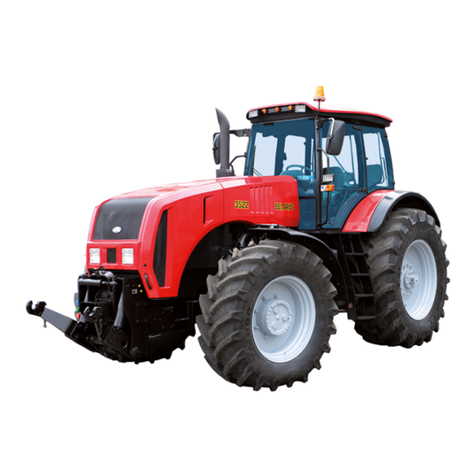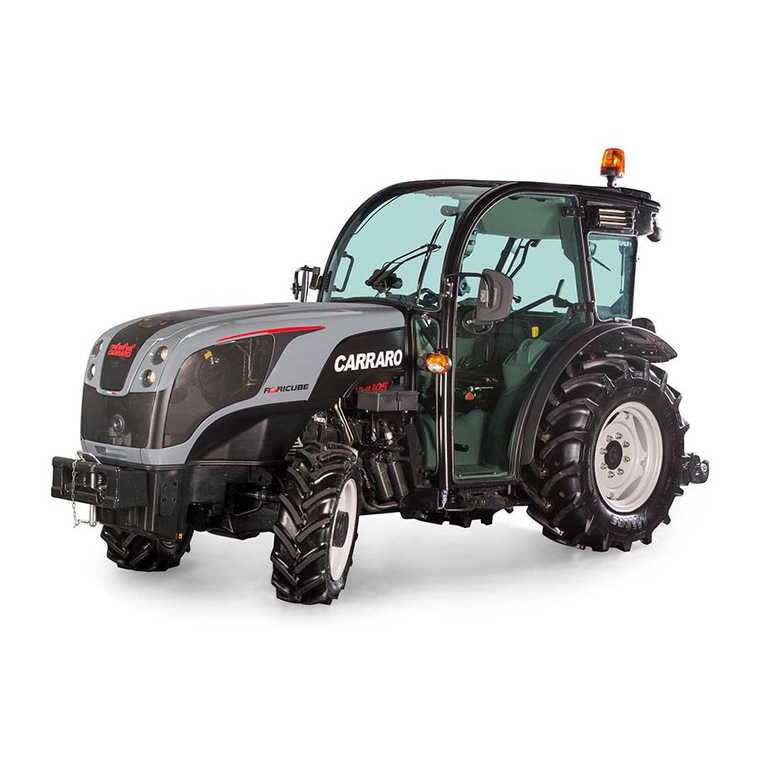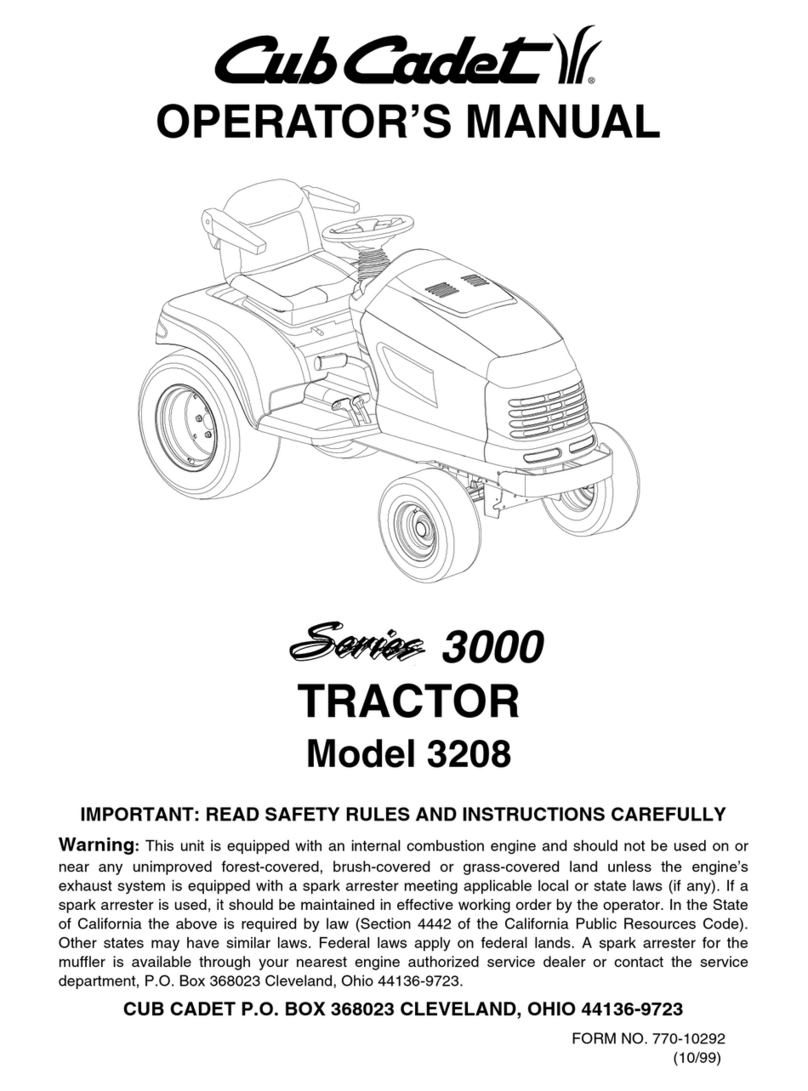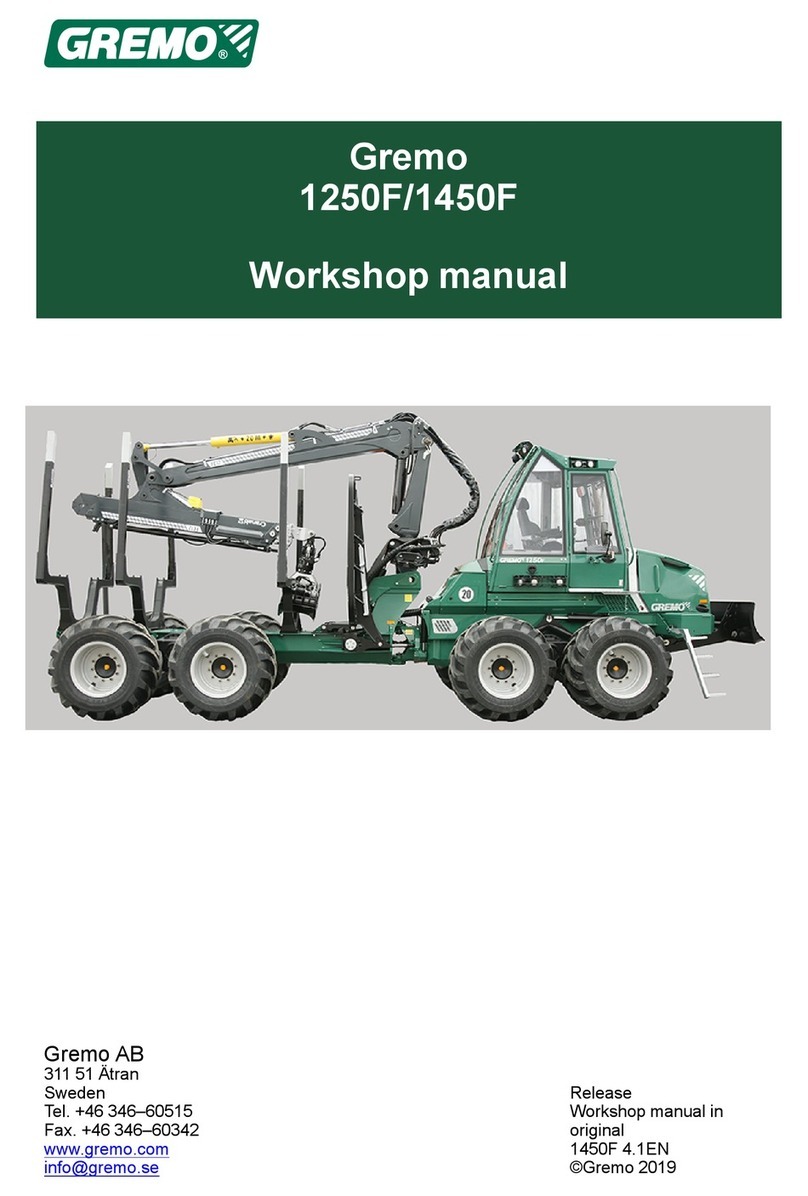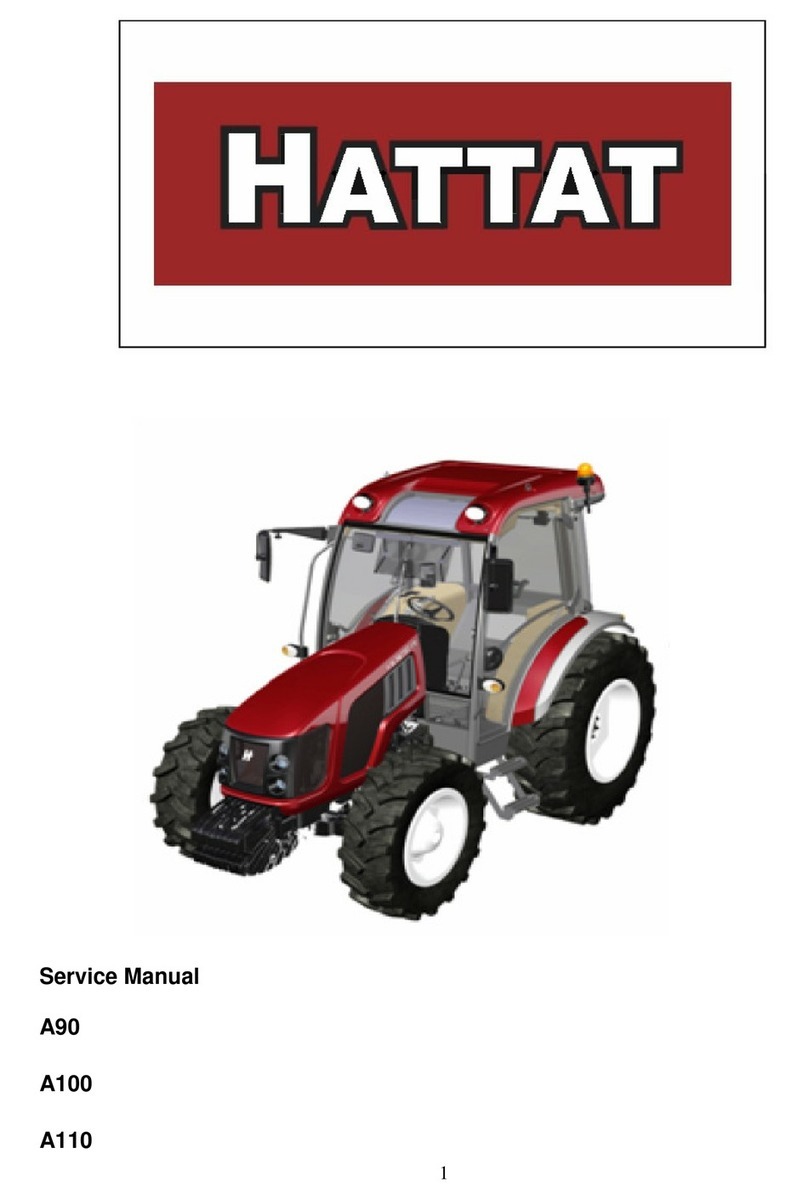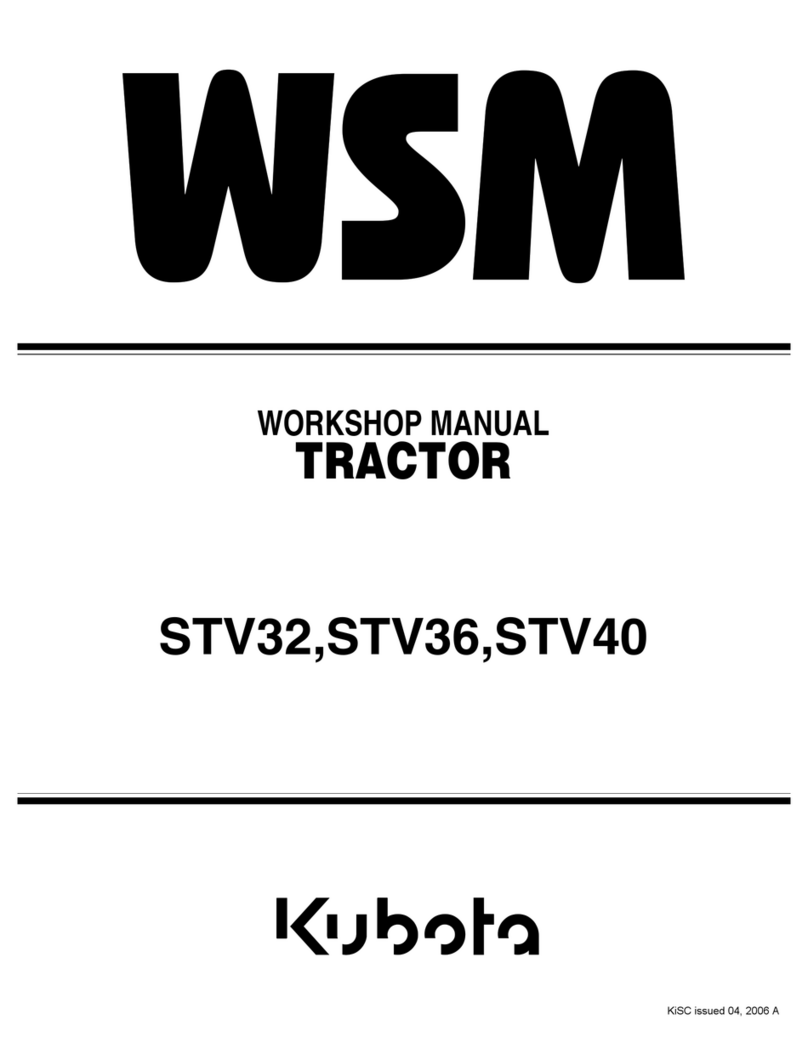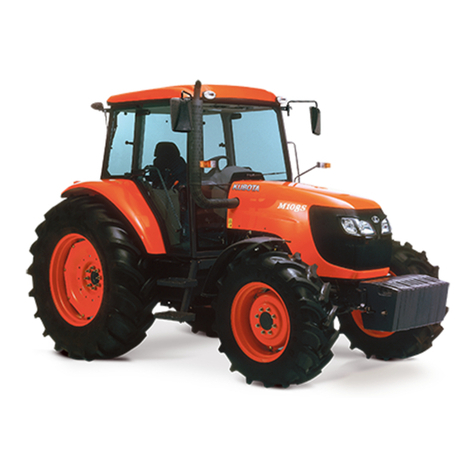
SECTION 00 -- GENERAL -- CHAPTER 1 5
603.54.381.00 -- 05 -- 2001
-- Only use specified towing points for towing the
tractor. Connect parts carefully. Make sure that
all pins and/or locks are secured in position be-
fore applying traction. Never remain near the
towing bars, cables or chains that are operating
under load.
-- Transport vehicles that cannot be driven using a
trailer or a low--loading platform trolley, if avail-
able.
-- When loading or unloading the vehicle from the
trailer (or other means of transport), select a flat
area capable of sustaining the trailer or truck
wheels. Firmly secure the tractor to the truck or
trailer and lock the wheels in the position used by
the carrier.
-- Electric heaters, battery--chargers and similar
equipment must only be powered by auxiliary
power supplies with efficient ground insulation to
avoid electrical shock hazards.
-- Always use suitable hoisting or lifting devices
when raising or moving heavy parts.
-- Take extra care if bystanders are present.
-- Never pour gasoline or diesel oil into open, wide
or low containers.
-- Never use gasoline, diesel oil or other inflam-
mable liquids as cleaning agents. Use non--in-
flammable, non toxic commercially available sol-
vents.
-- Wear safety goggles with side guards when
cleaning parts with compressed air.
-- Limit the air pressure to a maximum of 2.1 bar
(30.46 psi), according to local regulations.
-- Do not run the engine in confined spaces without
suitable ventilation.
-- Do not smoke, use naked flames, or cause
sparks in the area when fuel filling or handling
highly inflammable liquids.
-- Never use naked flames for lighting when work-
ing on the machine or checking for“leaks.
-- All movements must be carried out carefully
when working under, on or near the vehicle.
Wear protective equipment: helmets, goggles
and special footwear.
-- When carrying out checks with the engine run-
ning, request the assistance of an operator in the
driver’s seat. The operator must maintain visual
contact with the service technician at all times.
-- If operating outside the workshop, position the
vehicle on a flat surface and lock in position. If
working on a slope, lock the vehicle in position.
Move to a flat area as soon as is safely possible.
-- Damaged or bent chains or cables are unreliable.
Do not use them for lifting or towing. Always use
suitable protective gloves when handling chains
or cables.
-- Chains should always be safely secured. Make
sure that the hitch--up point is capable of sustain-
ing the load in question. Keep the area near the
hitch--up point, chains or cables free of all by-
standers.
-- Maintenance and repair operations must be car-
ried out in a CLEAN and DRY area. Eliminate any
water or oil spillage immediately.
-- Do not create piles of oil or grease--soaked rags
as they represent a serious fire hazard. Always
store rags in a closed metal container.
Before starting the vehicle or implements, make
sure that the driver’s seat is locked in position.
Also check that there are no persons within the
tractor or implement range of action.
-- Empty pockets of all objects that may fall unob-
served into the vehicle parts.
-- In the presence of protruding metal parts, use
protective goggles or goggles with side guards,
helmets, special footwear and gloves.
-- When welding, use protective safety devices:
tinted safety goggles, helmets, special overalls,
gloves and footwear. All persons present in the
area where welding is taking place must wear
tinted goggles. NEVER LOOK DIRECTLY AT
THE WELDING ARC WITHOUT SUITABLE
EYE PROTECTION.
-- Metal cables tend to fray with repeated use. Al-
ways use suitable protective devices (gloves,
goggles, etc.) when handling cables.
-- Handle all parts carefully. Do not put your hands
or fingers between moving parts. Wear suitable
safety clothing -- safety goggles, gloves and
shoes.
Find manuals at https://best-manuals.com
